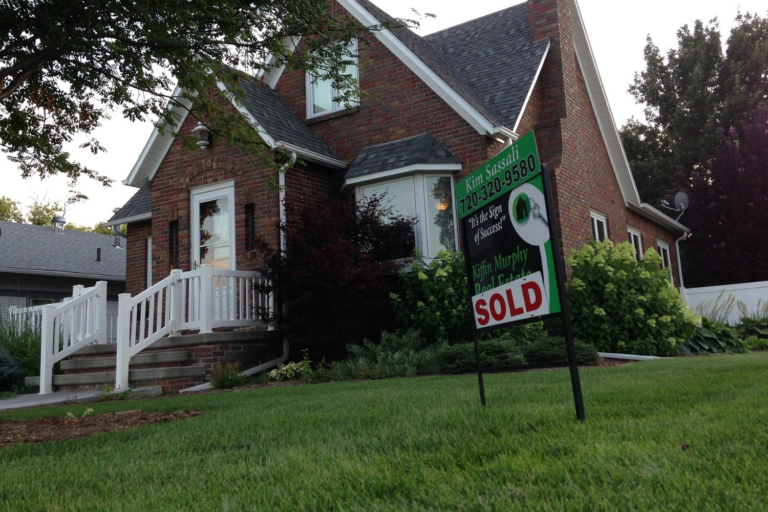
A couch with a red wine stain. An iPad with software issues. A car with a few dents and scratches. These are all items that you may see listed for sale “as is” on sites like Facebook Marketplace or Craigslist. With the addition of “as is,” the seller sends shoppers a message: Hey, you can buy this thing, and here’s the price I’m asking for. But you must accept the item at hand in its current condition, warts and all, including any flaws that aren’t immediately visible or apparent. So how do “as is” sales in furniture and retail translate to “as is” sales in real estate? Like selling a well-loved armchair or old Jeep with a WYSIWYG mentality, some sellers also try their hand at an “as is” home sale. While “as is” is always a bit of a red flag for a buyer, an “as is home sale” carries some extra baggage — namely, that you’re trying to unload a hassle or a fixer-upper. And because a house is one of the most expensive things you can buy, those red flags are amplified with a transaction of this size. If you don’t have a lot of money for repairs around the house or you need to move in a hurry, selling your home “as is” might appeal to you. However, buyers, at a minimum, are going to want a guarantee that a home is safe and livable before they move in. Let’s look at five things you should know about an “as is” home sale before you list your biggest asset like a damaged La-Z-Boy. Buyers fear inheriting a house with a host of hidden problems. According to the 2020 Profile of Home Buyers and Sellers from the National Association of Realtors (NAR), 44% of buyers who purchased new homes did so to avoid renovations and problems with plumbing or electricity. To protect buyers, real estate disclosure laws make it illegal for you to sweep major issues under the rug. Unless you live in a “Caveat Emptor” (or “Buyer Beware”) state, such as Arkansas, most states require you to disclose any “material defects” in your home and will hold you liable if you don’t reveal them upfront. What’s more, even some “Caveat Emptor” states, such as Alabama, require disclosing information about issues that might affect a buyer’s health or safety. (Curious about your area’s disclosure laws? Consult our guide to all 50 states’ mandated disclosures). “I think that’s probably the most important piece of this,” says Kim Tupper, a real estate agent of more than a decade in southeastern Pennsylvania who sells properties more than 69% faster than the average agent in the Lincoln University area. “Your disclosure has to be everything that you know is wrong with the house. You can’t hide anything in that ‘as is.’” In other words, you can disclose there’s a leaky roof, and ‘as is’ will mean, “I’m really not planning on repairing that for you.” But you can’t keep quiet about it, and neither can your agent. You might not be aware of every flaw — that’s for the home inspection to notice — but once you are, you can’t hide them, and legally, neither can your agent. As associate attorney Brett Wasserman puts it, actively concealing anything that could cause a potential buyer to value the property for less would be fraudulent. “You would want to disclose more than less. You don’t want to give the buyer any reason to turn around and say, ‘You didn’t tell me about this… I want X amount back,’” says Wasserman, an associate attorney who handles real estate law at the legal offices of Marc Bronstein in Santa Monica, California. A home inspection is part of a buyer’s due diligence. In fact, 95% of purchased homes undergo an inspection before closing. By saying your sale is “as is,” you’re not preventing a buyer from requesting an inspection, just signaling that no matter what the inspection finds, you don’t want to negotiate on price. If a buyer’s contract includes an inspection contingency, they can walk away with their earnest money if the inspection uncovers a red flag such as a crack in the foundation, even during an “as is” home sale. Because of the likelihood of an inspection, you’re better off being honest to avoid potential liability, adds top-selling real estate agent Vendela Bonner, who has served the Philadelphia, Pennsylvania, area for more than a decade. “A buyer will buy a property if you’ve had a roof leak. The more important thing is whether or not it was fixed,” she says. “Do you have a warranty after you’ve fixed it? That’s a yes or no answer.” When you consider the issues that might crop up during a home inspection such as electrical, plumbing, and structural problems, it’s understandable that some sellers want to throw up their hands and say, “Let’s sell this as-is.” But not every “as is” home sale falls into that category. Tupper has met many sellers, such as out-of-town adult children trying to sell a parent’s home, who are looking for a simple transaction because they don’t know the property well. However, even if they want to list the property “as is,” they’re willing to work with buyers on repairs related to health and safety matters — even if all they can manage financially is a credit at closing. “None of them have been completely against entertaining any request from the buyer,” she says. “There are going to be those situations where the seller literally has no money … but especially when it comes to a safety or health-related issue, those sellers are willing to help out or willing to work with you.” To avoid such preconceptions that “as is” carries, talk with your real agent about how to list your “as is” home sale without those two little words. For instance, Tupper in the Multiple Listing Service, or MLS, notes that inspections arranged by the buyer will be used for “informational purposes only” to provide buyers and their agents with such a heads-up. “I just think that’s a little bit more acceptable expectation for the buyer … We never want to give the impression that the sellers are not motivated,” she says. “I don’t think it’s worth the perception and getting less showings because of that perception when in fact, that seller may be willing to credit the buyer if they don’t want to do [repairs] themselves.” Investors increasingly play a large role in the housing market, according to NPR, citing data from CoreLogic that investors purchased 1 in 5 starter-priced homes in 2019. In fact, NAR notes that cash sales comprised 19% of December’s housing sales. While this has made it difficult for first-time buyers to compete in an increasingly crowded space, an investor or house-flipper tends to be less discerning about cosmetic repairs such as new paint and light fixtures than other potential buyers. This makes them a good buyer pool to target if you hope to sell “as is.” One survey of over 2,000 adults from real estate brokerage Coldwell Banker found that 80% of Americans want a move-in-ready home instead of one that requires renovations. By comparison, it’s common for house flippers to purchase a home without getting an inspection first and be comfortable purchasing properties in poor condition. The trade off is that an investor is going to factor the cost of necessary repairs and renovations into their offer, resulting in a lower bid than what a traditional buyer would pay. However, by way of paying with all cash, an investor can offer you additional benefits, such as a fast and flexible closing. You also won’t have to deal with the hassles of stagings and showings, since most cash buyers prefer to make offers on homes that haven’t hit the market yet. If you seek a no-fuss, “as is” home sale, we’d recommend requesting a cash offer through HomeLight’s Simple Sale platform. Investors in our network often prefer to buy homes as-is, in any condition, and we handle all the buyer-side costs and paperwork on your behalf. We get that convenience is huge, but we’ll also do our best to match you with the cash buyer who’s willing to offer you the highest price for your home. We do this by identifying the best cash buyer “match” for your property and location, based on that buyer’s preferred price point and the types of properties they’ve typically bought in the past. To get started, answer a few questions about your home and selling timeline. Alongside your cash offer, we’ll present you with an estimation of what you could fetch on the market with the help of a top agent so you can easily compare your options. Shane Underwood, a top-selling real estate agent in Lexington, Kentucky, has worked with homeowners relieved they were able to sell “as is” to a flipper because of personal or property issues. The drawback? They get “pennies on the dollar,” he says. While a flipper targeting rundown properties often offers no more than 70% of a property’s after-repair value for a house they plan to flip, traditional buyers who notice that an “as is” home needs work also subtract a lot from the value. For instance, if your carpeting reflects lots of wear and tear, you could replace it for $1 to $3 per square foot for builder-grade olefin and polyester, a cosmetic upgrade that makes a big impression. A buyer considering replacing the carpet might calculate using a higher grade that costs more. “A buyer almost always estimates higher than what it would have been than if [the seller] had done that repair themselves,” Tupper says. “If the seller tells me that they want to list it ‘as is,’ or with buyer’s inspection for informational purposes only, they may get a lower price just because they have taken that stance.” So in summary, whether you sell “as is” to an investor or “as is” to a regular buyer, the label tends to draw lower offers, period. Even if an “as is” home sale is your best bet because of your current circumstances, talk with your agent about how to maximize your offers. For instance, top HomeLight agents say that you can avoid leaving money on the table simply by deep cleaning and decluttering your home before putting it on the market. These projects not only help your home show better but have an exponential return on investment, making your home show better and adding thousands of dollars to your bottom line. Also, talk with your agent about the current market. Tupper recently sold an older four-bedroom Colonial with two and a half baths, a two-car garage, and an unfinished basement for a family uprooting to Texas to restart a business. The family didn’t have the resources for upgrades, so after little traffic, Tupper suggested renting it until market conditions improved. It later sold above expectations for $370,000. “It was just a function of good timing,” she says. Header Image Source: (tkoch / Pixabay)1. ‘As is’ isn’t a free pass to hide known issues.
Enter real estate disclosures
Sharing issues that you’re aware of
Risks of sweeping home flaws under the rug
2. Buyers can still get an inspection to unearth problems.
3. Buyers tend to presume that ‘as is’ means the seller is stubborn or lazy.
Simplifying the sale while remaining flexible
Use creative language to soften the ‘as is’ label
4. Cash buyers or investors will be more receptive to the ‘as is’ label.
How investors see “as is” differently
How to get a cash offer
5. When you sell ‘as is,’ you likely won’t get full market value.
Selling ‘as is’ is just one of your home-selling options



